Every DevOps team knows the struggle of keeping environments consistent while things move fast. Configuration management tools step in to handle that chaos, helping engineers automate setup, maintain system states, and avoid those late-night “it worked on my machine” moments. Whether you’re managing hundreds of servers or fine-tuning containers, these tools make sure everything stays in sync, repeatable, and under control. In this guide, we’ll look at the most reliable configuration management tools shaping modern DevOps workflows.

1. AppFirst
AppFirst takes a different approach to configuration management in DevOps. Instead of having teams manage infrastructure piece by piece, they focus on what the application itself needs: compute, databases, networking, and build everything around that. Teams define the app’s requirements, and AppFirst automates the provisioning, configuration, and compliance processes in the background. This way, organizations can avoid juggling Terraform scripts, YAML templates, or cloud-specific code while still maintaining security and consistency across their systems.
Their goal is to make configuration management more practical and less time-intensive. With built-in logging, monitoring, and security tools, developers can deploy and manage applications quickly without worrying about the setup underneath. Whether running in SaaS or self-hosted environments, AppFirst delivers reliable, cloud-ready infrastructure that adapts to each team’s needs, removing much of the manual overhead that usually slows development down.
Wichtigste Highlights:
- Simplifies configuration management tools in DevOps through automation
- Automatically provisions infrastructure based on app-level definitions
- Works across AWS, Azure, and GCP with consistent standards
- Includes built-in monitoring, logging, and auditing
- Removes the need for manual setup using Terraform or YAML
Who It’s Best For:
- Teams adopting configuration management tools in DevOps workflows
- Organizations managing multi-cloud or hybrid setups
- Developers who prefer focusing on product delivery instead of infra tasks
- Companies aiming to standardize configuration practices across teams
Kontakte:
- Website: www.appfirst.dev
2. Terraform
Terraform, made by HashiCorp, is one of those tools that quietly makes DevOps work feel more organized. It lets teams manage infrastructure as code, which means you define servers, storage, and networks in configuration files instead of setting everything up manually. The cool part is that it works across different cloud providers, so whether you’re on AWS, Azure, or somewhere else, Terraform keeps things consistent and versioned like regular software.
It’s great for automating setups, reducing human error, and making infrastructure changes easy to track and repeat. You can roll back, share configurations, and collaborate on the same infrastructure files through Terraform Cloud. Over time, it helps teams build predictable environments that actually behave the same way everywhere, instead of having to fix the same issues over and over again.
Wichtigste Highlights:
- Manages infrastructure through code for repeatability
- Works across multiple cloud providers and environments
- Automates setup and change tracking
- Keeps infrastructure versioned and reviewable
- Supports collaboration and governance through Terraform Cloud
Who It’s Best For:
- Teams working across multiple clouds or hybrid setups
- DevOps engineers automating infrastructure builds
- Organizations wanting consistent, version-controlled environments
- Groups adopting infrastructure-as-code workflows for better stability
Kontakte:
- Website: developer.hashicorp.com
3. Ansible
Ansible is an open-source automation tool built to make configuration management and IT orchestration less complicated. It helps teams automate everything from provisioning servers and deploying applications to managing system configurations and enforcing policies. Since it doesn’t rely on complex agents, Ansible is relatively easy to get started with and fits into a wide range of environments. What makes it useful in DevOps is how it connects different teams: operations, development, and security, under a single, repeatable automation process.
Red Hat’s Ansible Automation Platform builds on the open-source version by combining multiple community projects into one secure, enterprise-grade environment. It adds advanced capabilities like event-driven automation and policy enforcement at scale, which can help maintain compliance and consistency across infrastructure. Users can also take advantage of Ansible Galaxy for ready-made roles and collections, speeding up setup and reducing repetitive work.
Wichtigste Highlights:
- Automates provisioning, configuration, and deployment tasks
- Works without agents for easier setup and maintenance
- Includes Policy as Code for compliance and governance
- Red Hat’s enterprise version adds event-driven automation and security
- Uses Ansible Galaxy for reusable roles and collections
Who It’s Best For:
- Teams automating infrastructure and app deployment across environments
- Organizations looking for consistent configuration and policy management
- DevOps engineers wanting scalable and repeatable workflows
- Enterprises needing secure, centralized automation platforms
Kontakte:
- Website: www.redhat.com
- Telefon: +1 919 754 3700
- Email: ansible-catalyst@redhat.com
- Address: 100 East Davie Street, Raleigh, NC 27601 United States
- LinkedIn: www.linkedin.com/company/red-hat
- Facebook: www.facebook.com/RedHat
- Twitter/X: x.com/RedHat

4. CFEngine
CFEngine is one of the earlier tools in configuration management, known for its stability and focus on security. It automates key operational tasks like system configuration, patch management, and compliance monitoring, all while using minimal system resources. CFEngine continuously enforces desired states across systems, preventing configuration drift and keeping environments in sync. It’s used by large organizations running complex infrastructures that need reliable, lightweight automation at scale.
The tool comes in both open-source and enterprise editions. The enterprise version includes features like dashboards, alerts, compliance reports, and API integrations, giving teams more visibility and control. CFEngine’s approach is practical, it prioritizes predictability, compliance, and operational safety over complexity, making it a solid choice for environments that need to stay secure and consistent without a lot of manual upkeep.
Wichtigste Highlights:
- Automates configuration, security, and compliance management
- Enforces system states continuously to prevent drift
- Lightweight and efficient, even in large infrastructures
- Offers detailed dashboards and reporting in enterprise edition
- Works across Linux and Windows environments
Who It’s Best For:
- DevOps or IT teams managing large, distributed infrastructures
- Organizations needing strong compliance and security automation
- Teams that prefer lightweight, reliable tools for system management
- Enterprises requiring long-term stability and visibility
Kontakte:
- Website: cfengine.com
- Address: 470 Ramona Street, Palo Alto, CA 94301
- LinkedIn: www.linkedin.com/company/northern.tech
- Twitter/X: x.com/cfengine
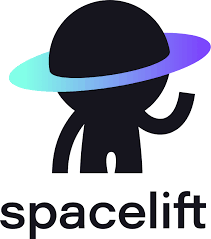
5. Spacelift
Spacelift is a DevOps orchestration platform designed to bring infrastructure-as-code (IaC) and configuration management tools under one workflow. It connects with Terraform, Ansible, OpenTofu, and other systems to automate infrastructure provisioning and configuration while maintaining control and visibility. For DevOps teams, this means less tool switching and a smoother process from deployment to governance. It also supports drift detection, compliance enforcement, and team collaboration through policy-driven workflows.
The platform gives both developers and platform teams what they need: speed and control. Developers can self-provision infrastructure using predefined workflows, while admins can set guardrails and policies that keep everything compliant. It’s available as SaaS or self-hosted, so organizations in regulated industries can maintain control within their own environments. Overall, Spacelift helps teams scale IaC safely while cutting down on repetitive manual processes.
Wichtigste Highlights:
- Orchestrates Terraform, Ansible, and other IaC tools in one workflow
- Automates provisioning, configuration, and policy enforcement
- Built-in drift detection and infrastructure governance
- Supports both SaaS and self-hosted deployment options
- Integrates with existing version control and monitoring tools
Who It’s Best For:
- DevOps teams managing complex IaC pipelines
- Platform engineers seeking centralized control and visibility
- Organizations balancing developer freedom with compliance needs
- Companies operating in regulated or security-sensitive environments
Kontakte:
- Website: spacelift.io
- Email: info@spacelift.io
- Address: 541 Jefferson Ave. Suite 100, Redwood City CA 94063
- LinkedIn: www.linkedin.com/company/spacelift-io
- Facebook: www.facebook.com/people/spaceliftio
- Twitter/X: x.com/spaceliftio
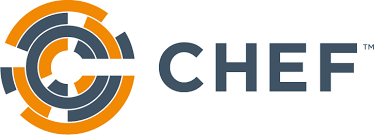
6. Chef Infra
Chef Infra is a policy-driven configuration management tool that helps automate how infrastructure is built, maintained, and secured. It allows teams to define configuration rules as code, which means every environment, whether it’s on-premises, in the cloud, or at the edge, can be managed in a consistent, repeatable way. Instead of manually handling updates or configurations, Chef Infra automatically checks each system against its defined state and fixes any drift it finds.
Chef uses cookbooks and recipes to describe desired system states in simple, human-readable code. It supports testing and validation tools like Test Kitchen and Chef InSpec to make sure everything works before it reaches production. Because policies are version-controlled and testable, Chef helps DevOps teams work faster while keeping compliance and security standards in check. It’s flexible enough to handle mixed environments, from Linux servers to macOS devices, without creating separate workflows for each.
Wichtigste Highlights:
- Automates configuration and policy management as code
- Prevents configuration drift through continuous enforcement
- Works across hybrid environments, including cloud and edge systems
- Includes testing tools for validation and compliance
- Backed by a large community with reusable cookbooks and templates
Who It’s Best For:
- DevOps teams managing complex or mixed operating environments
- Organizations aiming for consistent, test-driven infrastructure
- Companies needing built-in compliance and security validation
- Teams adopting infrastructure-as-code practices at scale
Kontakte:
- Website: www.chef.io
- Phone: +1-800-477-6473
- Anschrift: 15 Wayside Rd, Suite 400 Burlington, MA 01803 Weltweiter Hauptsitz
- LinkedIn: www.linkedin.com/company/chef-software
- Facebook: www.facebook.com/getchefdotcom
- Instagram: www.instagram.com/chef_software
- Twitter/X: x.com/chef

7. OpenTofu
OpenTofu is an open-source infrastructure-as-code tool developed under the Linux Foundation as a community-led alternative to Terraform. It’s designed to help teams define, provision, and manage infrastructure across multiple cloud platforms using code. The tool works with thousands of existing Terraform providers and modules, making it a smooth transition for anyone already familiar with that ecosystem. With OpenTofu, you can track changes, collaborate through version control, and deploy updates automatically, all while maintaining transparency and control.
Recent releases of OpenTofu introduced features like selective resource exclusion, provider iteration, and built-in state encryption. These capabilities make it easier to manage complex, multi-region deployments and keep infrastructure data secure. The focus is on flexibility and reliability, allowing DevOps teams to keep their workflows open, auditable, and vendor-neutral while benefiting from ongoing community innovation.
Wichtigste Highlights:
- Open-source, community-driven infrastructure-as-code tool
- Fully compatible with Terraform modules and providers
- Adds advanced features like resource exclusion and provider iteration
- Includes built-in state encryption for security
- Actively supported and maintained by a large contributor community
Who It’s Best For:
- DevOps engineers seeking open, transparent IaC workflows
- Teams managing multi-cloud or cross-region deployments
- Organizations moving away from proprietary IaC tools
- Contributors who value community-driven development and governance
Kontakte:
- Website: opentofu.org
- Twitter/X: x.com/opentofuorg
8. Puppet
Puppet is a configuration management and automation platform built to keep infrastructure secure, consistent, and compliant. It uses a model-driven approach, where the desired system state is defined and continuously enforced across servers, networks, cloud, and edge environments. Puppet’s automation capabilities help eliminate repetitive manual work while maintaining full visibility into what’s running, who changed it, and when. This makes it easier for teams to maintain control, especially in large, hybrid infrastructures.
With policy-based automation and detailed reporting, Puppet helps organizations meet compliance requirements and reduce configuration drift. It integrates with other DevOps tools to speed up deployments and supports both open-source and enterprise editions for different scalability needs. In short, Puppet gives teams a structured way to automate governance and configuration without losing flexibility or oversight.
Wichtigste Highlights:
- Defines and enforces desired state across hybrid environments
- Automates configuration, compliance, and security policies
- Includes reporting and audit capabilities for governance
- Scales across thousands of systems with consistent results
- Integrates with existing DevOps pipelines and tools
Who It’s Best For:
- Enterprises managing large-scale or regulated infrastructures
- DevOps and IT teams focused on compliance and control
- Organizations reducing manual configuration tasks
- Teams seeking centralized automation across mixed systems
Kontakte:
- Website: www.puppet.com
- Phone: +1 612.517.2100
- Email: sales-request@perforce.com
- Address: 400 First Avenue North #400 Minneapolis, MN 55401
- LinkedIn: www.linkedin.com/company/perforce
- Twitter/X: x.com/perforce

9. Salt
Salt is an open-source automation and configuration management platform known for its speed, flexibility, and scalability. It helps DevOps teams handle configuration management, remote execution, and orchestration all from one place. Using Salt, teams can automate repetitive tasks, manage infrastructure in real time, and maintain consistency across servers or cloud environments. It’s built around a data-driven approach, allowing users to execute commands or apply configurations across thousands of systems almost instantly.
What makes Salt stand out is its versatility. It works for both large enterprise systems and smaller setups, and it integrates well with CI/CD pipelines. The Salt Project also provides active community support, extensive documentation, and learning resources for users at every level. For enterprises, Salt is now part of VMware’s Tanzu platform, offering an enhanced experience with more security, automation control, and enterprise-ready integrations.
Wichtigste Highlights:
- Handles configuration management, orchestration, and remote execution
- Fast, scalable, and data-driven automation framework
- Real-time management across hybrid or cloud infrastructures
- Supported by a large open-source community and learning resources
- Enterprise-ready through VMware Tanzu integration
Who It’s Best For:
- DevOps teams managing large-scale or hybrid infrastructures
- Organizations seeking flexible, event-driven automation
- Teams that need real-time visibility and control of configurations
- Enterprises already using VMware or Tanzu ecosystems
Kontakte:
- Website: saltproject.io
- LinkedIn: www.linkedin.com/company/saltproject
- Facebook: www.facebook.com/SaltProjectOSS
- Instagram: www.instagram.com/saltproject_oss
- Twitter/X: x.com/Salt_Project_OS
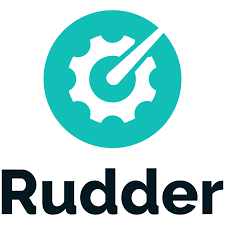
10. Rudder
Rudder focuses on automated infrastructure security and compliance. It provides configuration management combined with continuous monitoring to help organizations maintain a strong and uniform security posture. With Rudder, teams can automatically apply and enforce security configurations across systems, detect vulnerabilities, and stay compliant with standards like CIS, ISO 27001, or NIST. The platform gives real-time visibility into the health and compliance status of every system, helping teams catch and fix issues before they become problems.
It’s designed to be user-friendly, offering a graphical interface and adaptable automation that works across cloud and on-premises setups. Rudder also provides patch management, vulnerability tracking, and customizable security models that fit specific organizational needs. It’s especially helpful for teams that need both security automation and compliance oversight without writing complex scripts from scratch.
Wichtigste Highlights:
- Combines configuration management with continuous security monitoring
- Automates patching, compliance, and vulnerability remediation
- Provides real-time insights into system health and security posture
- Supports compliance frameworks like CIS, NIST, and ISO 27001
- Offers a flexible and visual interface for managing hybrid environments
Who It’s Best For:
- IT and security teams managing mixed infrastructures
- Organizations prioritizing compliance and vulnerability control
- Companies needing centralized visibility across systems
- Teams seeking an easy-to-use, security-focused automation tool
Kontakte:
- Website: www.rudder.io
- Phone: +33 1 83 62 26 96
- Address: 226 boulevard Voltaire, 75011 Paris, France
- LinkedIn: www.linkedin.com/company/rudderbynormation
- Twitter/X: x.com/rudderio
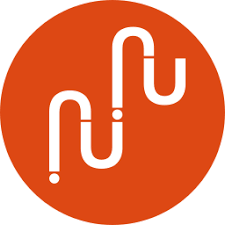
11. Juju
Juju by Canonical is an open-source orchestration engine designed for managing application lifecycles across cloud, virtual, and bare-metal environments. It uses a concept called “charms,” which are prepackaged operators containing reusable automation logic for deploying and managing software. This approach allows teams to spin up applications quickly, integrate them with other systems, and handle updates or scaling without complex manual steps.
Juju simplifies multi-cloud management by supporting a wide range of platforms, including AWS, Azure, Google Cloud, and Kubernetes. Its centralized service, JAAS (Juju as a Service), gives teams more control with audit logs, access management, and visibility into deployments. Whether you’re managing databases, observability tools, or full-stack applications, Juju helps unify operations across environments with consistent, automated workflows.
Wichtigste Highlights:
- Uses reusable “charms” for automating app deployment and lifecycle management
- Works across clouds, Kubernetes, virtual machines, and on-premises systems
- Supports integrations between multiple applications as first-class operations
- Offers JAAS for centralized control, access management, and auditing
- Backed by Canonical, the company behind Ubuntu
Who It’s Best For:
- Teams deploying complex multi-service applications
- Organizations managing hybrid or multi-cloud environments
- DevOps engineers automating application lifecycle management
- Companies already using Ubuntu or other Canonical solutions
Kontakte:
- Website: canonical.com
- Phone: +44 20 8044 2036
- Address: 5th floor 3 More London Riverside, London SE1 2AQ United Kingdom
- LinkedIn: www.linkedin.com/company/canonical
- Facebook: www.facebook.com/ubuntulinux
- Instagram: www.instagram.com/ubuntu_os
- Twitter/X: x.com/Canonical

12. Foreman
Foreman is an open-source lifecycle management tool that helps system administrators automate server provisioning, configuration, and monitoring. It supports both physical and virtual infrastructure, making it easy to deploy and manage environments across data centers and clouds. With Foreman, you can handle repetitive administrative tasks, track changes, and oversee systems from a single interface or through its API. It integrates well with popular configuration tools like Puppet, Salt, and Ansible, giving teams flexibility in how they manage infrastructure.
The platform offers detailed reporting, auditing, and host monitoring to give real-time insight into system health. It includes role-based access control (RBAC) for secure user management and can connect to LDAP or FreeIPA for authentication. Foreman also features a plugin architecture that allows teams to extend its capabilities and tailor workflows to their setup. Whether running on bare metal, VMware, or cloud services like AWS and Google Cloud, Foreman simplifies hybrid infrastructure management through automation and central visibility.
Wichtigste Highlights:
- Manages full server lifecycle from provisioning to monitoring
- Supports hybrid environments including on-premises and cloud providers
- Integrates with configuration tools such as Puppet, Salt, and Ansible
- Includes auditing, RBAC, and LDAP/FreeIPA integration
- Extensible through a wide range of plugins
Who It’s Best For:
- System administrators managing large or hybrid infrastructures
- DevOps teams automating server provisioning and configuration
- Organizations requiring role-based access and auditing features
- IT teams using Puppet, Salt, or Ansible for configuration management
Kontakte:
- Website: theforeman.org
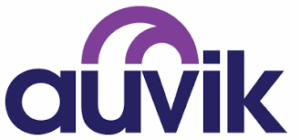
13. Auvik
Auvik is a cloud-based network management platform that gives IT teams real-time visibility into their infrastructure. It automatically maps networks, tracks connected devices, and provides continuous monitoring so teams can detect and fix problems quickly. Instead of manually checking logs or running scans, administrators can see what’s happening across routers, switches, firewalls, and endpoints in a live view. Auvik works with more than 700 hardware vendors, so it fits easily into most environments without heavy setup or custom configurations.
The platform is built to simplify network troubleshooting and maintenance for both managed service providers (MSPs) and in-house IT teams. It keeps topology maps updated automatically, supports traffic analysis, and centralizes configuration backups in one dashboard. Because Auvik is cloud-based, it can be deployed in minutes and allows remote network management from anywhere. This mix of automation, visibility, and ease of use makes it a practical tool for teams managing growing or distributed networks.
Wichtigste Highlights:
- Real-time network visibility and automated device discovery
- Auto-generated topology maps that update as networks change
- Cloud-based deployment with remote access and management
- Centralized monitoring, configuration, and traffic analysis tools
- Compatible with device vendors and multiple integrations
Who It’s Best For:
- IT teams managing complex or multi-site networks
- Managed service providers offering remote monitoring
- Organizations wanting faster troubleshooting and live insights
- Teams needing unified control over network configuration and performance
Kontakte:
- Website: www.auvik.com
- Phone: 888-609-2011
- Email: sales@auvik.com
- LinkedIn: www.linkedin.com/company/auvik
- Facebook: www.facebook.com/AuvikOfficial
- Twitter/X: x.com/AuvikOfficial
Einpacken
Configuration management tools are basically what stop DevOps from turning into pure chaos. Each one tackles the same big challenge in its own way: keeping systems stable, consistent, and easier to manage as everything grows. The real win isn’t just the automation itself, but how it frees people up to focus on improving things instead of constantly chasing down configuration issues.
At the end of the day, there’s no one-size-fits-all answer here. Some teams love the simplicity of agentless setups, while others need more control over complex, hybrid systems. The best move is to experiment a bit – figure out what actually works for your setup and build from there. DevOps isn’t about collecting every flashy tool on the market; it’s about picking the ones that make your systems run smoother, your deployments quicker, and your workdays a little less hectic.


